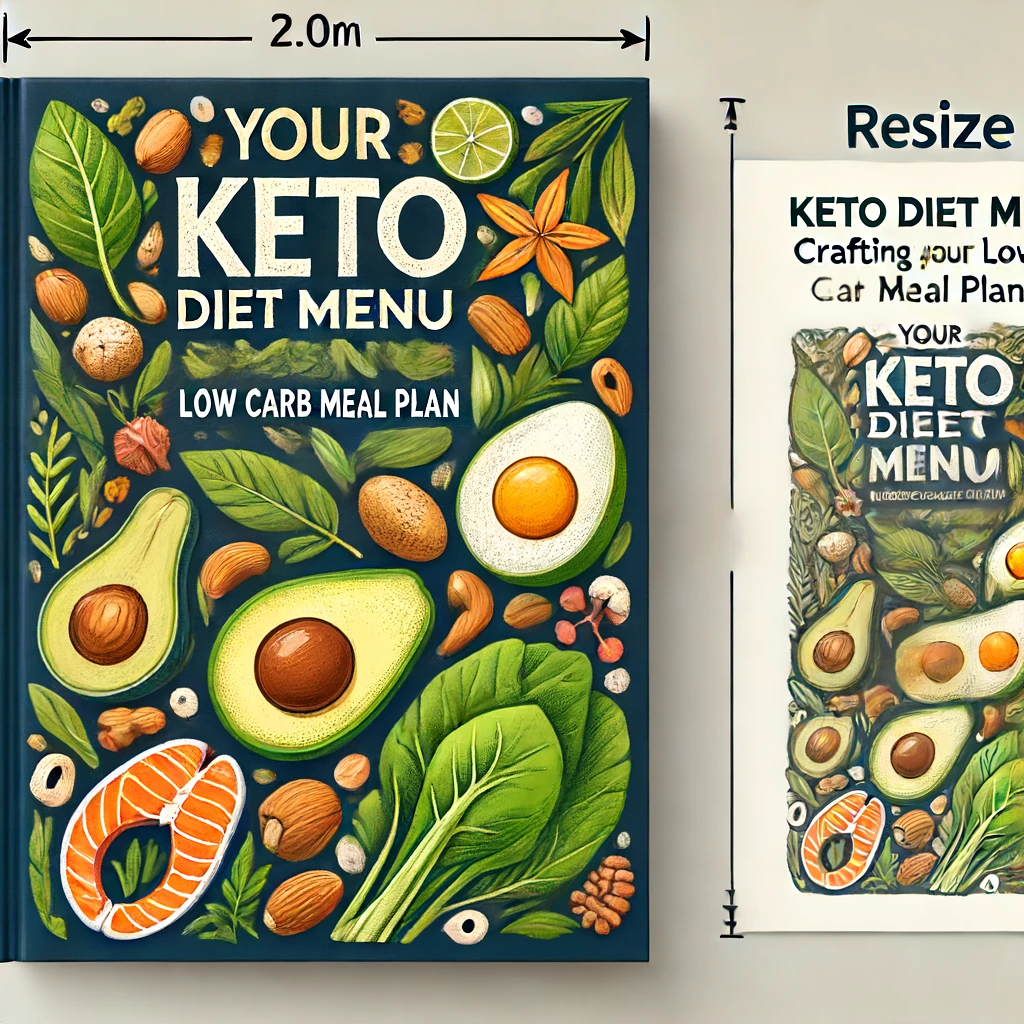Embarking on a ketogenic journey not only transforms your body but also your eating habits. Celebrated for its ability to burn fat, the keto diet relies on a low-carb, high-fat regimen that pushes your body into ketosis, a state in which fat becomes the primary source of energy. This guide will help you assemble a keto diet menu that is both effective and pleasing, offering variety to ensure you remain committed and satisfied with every meal.
Fundamentals of the Keto Diet
Before we start crafting your keto diet menu , let’s revisit the basics of the ketogenic diet. This diet drastically reduces your carbohydrate consumption to approximately 5-10% of your total daily calories, moderates protein intake (20-25%), and increases fats (70-75%).
What to Eat and Avoid on the Keto Diet
Permissible Foods:
- Fats and Oils: Includes olive oil, coconut oil, butter, and avocado oil
- Proteins: Opt for grass-fed meats, fatty fish, eggs, and full-fat dairy products
- Vegetables: Focus on leafy greens and above-ground veggies such as broccoli and cauliflower
- Nuts and Seeds: Include almonds, walnuts, flaxseeds, and chia seeds
- Additional Choices: Avocados, moderate amounts of berries, and dark chocolate with a high percentage of cocoa
Foods to Exclude: - High-carb items: Avoid bread, pasta, rice, and sweets
- Certain Fruits: Stay away from bananas, oranges, and apples
- Starchy Vegetables: Skip potatoes, peas, and corn
Developing Your Keto Meal Plan
Breakfast Options: Keto diet menu
- Egg salad with avocado
- Berries and whipped cream on keto pancakes
- Omelet with spinach and feta
Lunch Suggestions - Grilled chicken over zucchini noodles with pesto
- Stir-fried cauliflower rice with tofu and veggies
- Tuna salad in scooped-out avocados
Dinner Choices - Asparagus and hollandaise sauce alongside grilled salmon
- Coconut oil beef stir-fry with assorted vegetables
- Zucchini noodles topped with chicken Alfredo
Snacks and Sweet Treats - Cheese crisps
- Muffins made with almond flour
- Coconut oil fat bombs
Tips for Keto Meal Preparation
Meal prepping is crucial for maintaining your keto diet. It saves time and helps you adhere to your dietary goals.
- Plan Meals: Outline your meals for the week, focusing on diverse proteins, fats, and low-carb veggies.
- Cook in Bulk: Prepare large quantities of proteins like chicken or beef, using various spices and marinades.
- Prep Veggies: Clean, cut, and store vegetables. Roast a batch of keto-friendly veggies like broccoli or Brussels sprouts for easy meal additions.
- Efficient Storage: Use high-quality containers to keep meals fresh. Opt for glass containers for easy reheating.
- Prepare Snacks: Portion keto-friendly snacks such as cheese slices, nuts, or boiled eggs for easy access.
Staying Hydrated and Managing Electrolytes
Maintaining hydration and electrolyte balance is essential due to the keto diet’s diuretic effect.
- Drink Water: Consume at least eight glasses daily, more if active. Add a pinch of sea salt to replenish sodium.
- Electrolyte Foods: Eat foods rich in potassium (avocados, greens), magnesium (nuts, seeds), and sodium (salted nuts, bone broths).
- Consider Supplements: If dietary intake is insufficient, consider supplements specifically formulated for ketogenic diets.
- Additional Hydration: Drink unsweetened herbal teas and bone broth to stay hydrated and enjoy soothing fluids.
Dining Out While on Keto
Eating out doesn’t mean straying from your keto goals. With preparation and clever menu choices, you can enjoy social meals while keeping your diet on track.
- Review the Menu: Check the restaurant’s menu ahead of time to plan your meal.
- Customize Your Order: Request substitutions like extra veggies or salad in place of high-carb sides.
- Sauces on the Side: Request dressings and sauces on the side to monitor your intake.
- Drink Wisely: Choose water, unsweetened tea, or zero-carb mixers for alcoholic drinks.
Overcoming Common Keto Challenges
Adapting to the keto lifestyle can present some hurdles. Here are ways to manage them:
- Avoid Keto Flu: Stay hydrated, replenish electrolytes, and ensure sufficient fat intake.
- Manage Cravings: Keep keto-friendly snacks available to diminish carb and sugar cravings over time.
- Address Plateaus: If weight loss stalls, revisit your calorie intake and macro ratios or consider intermittent fasting.
- Handle Social Situations: Educate others about your diet and bring a keto-friendly dish to share.
Your Keto Success Blueprint
A well-crafted keto diet menu is crucial for reaching your health and weight loss objectives. With the right foods and strategies, you
can make your keto journey both enjoyable and successful.
FAQs
Can I Ever Eat Carbs Again on a Keto Diet?
After meeting your keto goals or transitioning to a long-term eating plan, reintroducing carbs is possible. Some opt for a cyclical keto diet, alternating between strict keto and higher-carb phases to maintain benefits.
How Can I Avoid the Keto Flu?
Minimize keto flu by increasing water intake, supplementing electrolytes, easing into the diet gradually, and ensuring adequate fat consumption.
Are Artificial Sweeteners Keto-Friendly?
Certain artificial sweeteners are suitable for keto as they don’t affect blood sugar. Opt for natural choices like stevia, erythritol, or monk fruit, used in moderation.
How Much Protein Is Too Much on a Keto Diet?
Protein should be moderate on keto, typically 0.6 to 1.0 grams per pound of lean mass, depending on activity levels. Excess protein can interfere with ketosis.
Can I Drink Alcohol on a Keto Diet?
You can drink alcohol on keto, but opt for low-carb, moderate consumption choices. Spirits are preferable without sweet mixers, and light options in beer and wine are advisable to stay in ketosis.
Sharing is Caring
